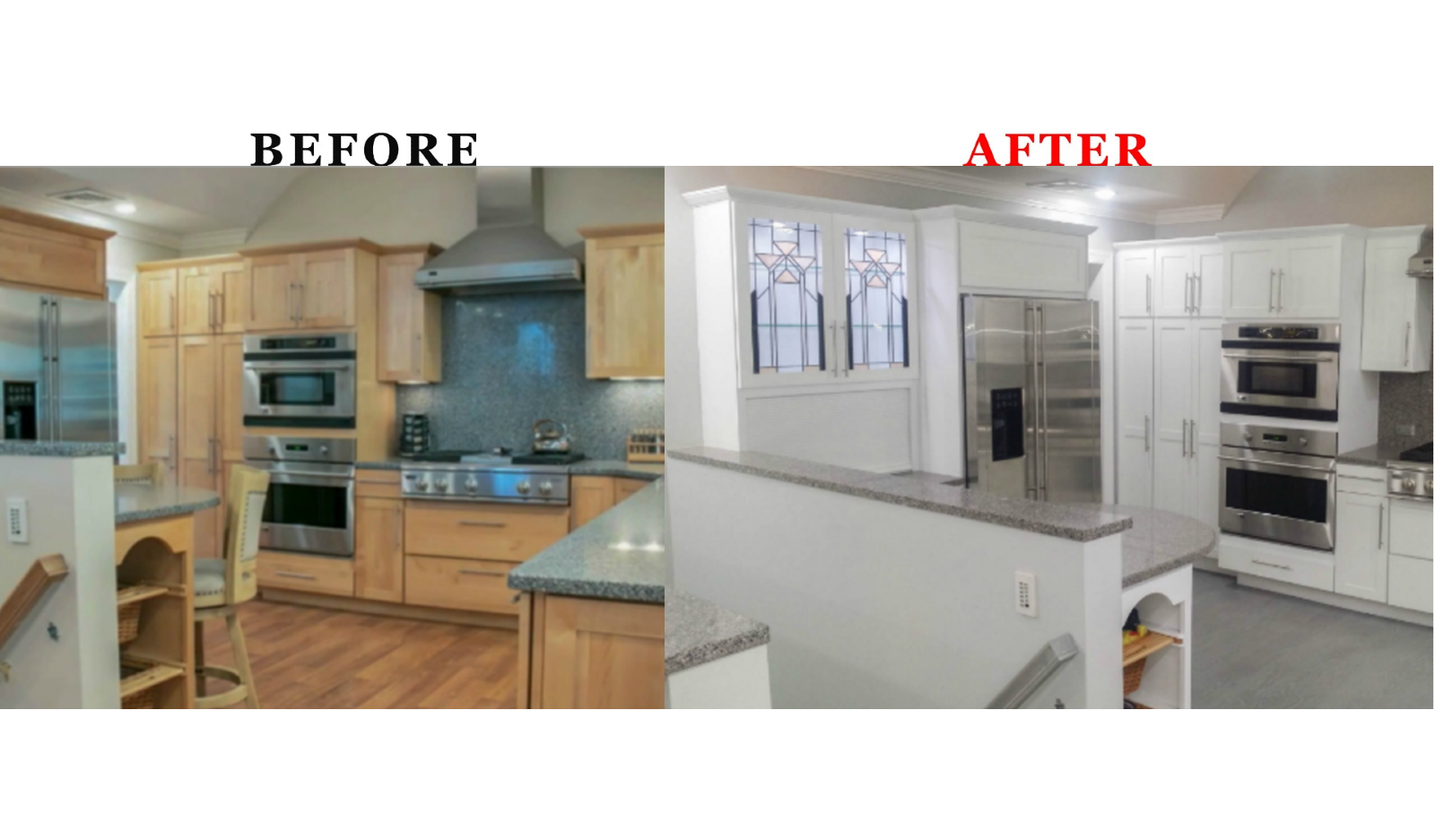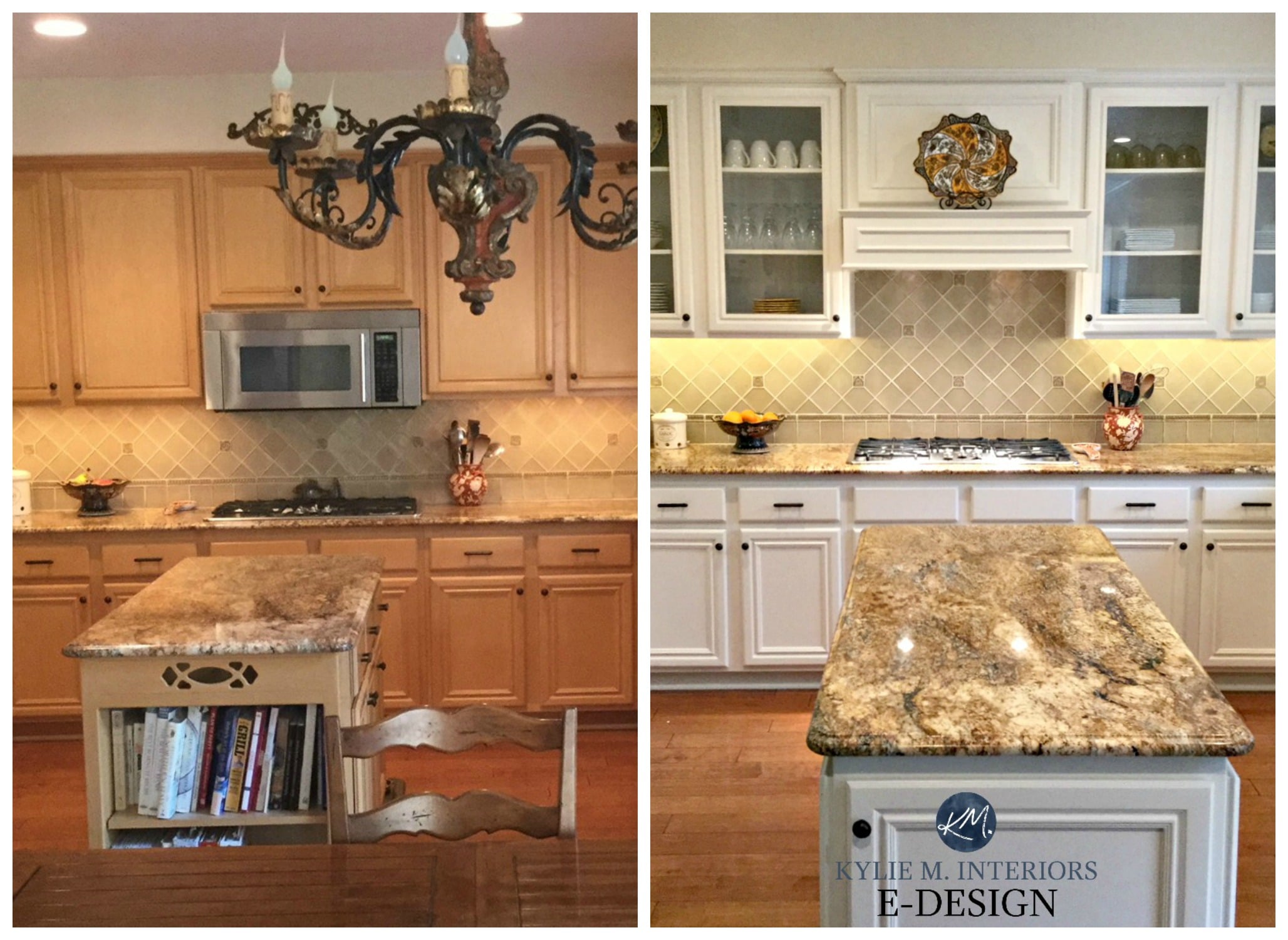Pre-Painting Preparation

Getting your melamine kitchen cabinets ready for a fresh coat of paint is like prepping for a big Pontianak party – you gotta do it right to get the best results! A little effort upfront saves a whole lotta heartache later. This guide will walk you through the essential steps to ensure a smooth, long-lasting paint job.
Cleaning Melamine Cabinets
Thorough cleaning is crucial for optimal paint adhesion. Dirt, grease, and grime will prevent the paint from bonding properly, leading to peeling and chipping. Here’s how to get your cabinets sparkling clean:
- Degreasing: Begin by wiping down all surfaces with a solution of warm water and a mild dish soap. This removes loose dirt and grease. Pay extra attention to areas prone to buildup like handles and knobs.
- Deep Clean: For stubborn grease, use a degreaser specifically designed for kitchen use. Follow the product instructions carefully. Remember to wear gloves to protect your hands.
- Rinsing: After cleaning, rinse all surfaces thoroughly with clean water and allow them to dry completely. A damp cloth followed by a dry cloth is best to avoid water spots.
Surface Preparation: Sanding
Sanding creates a slightly rough surface that helps the primer and paint adhere better. This is especially important for melamine, which is notoriously slick. The choice of sandpaper grit is vital for achieving the right level of roughness without damaging the surface.
| Sandpaper Grit | Use |
|---|---|
| 120-grit | For initial sanding to remove any significant imperfections or old finishes. Use lightly. |
| 180-grit | For smoothing out the surface after the initial sanding. Use with even pressure. |
| 220-grit | For final sanding to create a very smooth surface before priming. Use lightly. |
Filling Dents and Scratches
Before painting, address any dents or scratches. This ensures a smooth, even finish.
Painting melamine kitchen cabinets before and after – Before Filling: Imagine a deep scratch running across one of your cabinet doors, marring the otherwise pristine surface.
After Filling: After carefully applying a wood filler (chosen for its compatibility with melamine), the scratch is almost invisible. The filler has been smoothed down and is ready for sanding.
Priming Melamine Cabinets
Priming is essential for melamine surfaces because it creates a better bonding surface for the paint and prevents the melamine’s smooth surface from affecting the paint’s adhesion.
- Primer Selection: Choose a high-quality bonding primer specifically designed for melamine or smooth surfaces. Many brands offer primers explicitly for this purpose.
- Application: Apply the primer using a high-quality brush, roller, or spray gun. Ensure even coverage, avoiding drips and runs. Follow the manufacturer’s instructions for drying time.
- Light Sanding (Optional): After the primer has dried completely, you may lightly sand the surface with 220-grit sandpaper to ensure a perfectly smooth finish before painting. This step is optional but recommended for the best results.
Painting Techniques and Color Selection: Painting Melamine Kitchen Cabinets Before And After

So, you’ve prepped your melamine cabinets like a pro – now let’s dive into the fun part: painting! Choosing the right paint and technique is key to a stunning, long-lasting finish. Think of it as choosing the perfect outfit for your kitchen – it needs to be both stylish and durable. Get ready to unleash your inner artist (even if you think you’re more of a ‘stick-figure’ kind of person)!
Paint Type Comparison
Selecting the right paint is crucial for a successful project. Different paints offer varying levels of durability, finish, and ease of application. Here’s a breakdown to help you decide:
| Paint Type | Advantages | Disadvantages |
|---|---|---|
| Acrylic Latex | Easy to clean up with water, low odor, relatively quick drying time, durable finish. | May require more coats for full coverage on dark melamine, less resistant to scratches and abrasion compared to enamel. |
| Alkyd Enamel | Extremely durable, resistant to scratches and chipping, provides a hard, glossy finish. | Strong odor, requires mineral spirits for cleanup, longer drying time. |
| Oil-Based Enamel | Excellent durability and water resistance, self-leveling for a smooth finish. | Strong odor, long drying time, requires mineral spirits for cleanup, can yellow over time. |
Painting Techniques
The way you apply the paint significantly impacts the final look. Each method has its own pros and cons:
Brushing: Imagine a meticulous artist carefully applying each stroke. This technique offers great control, perfect for detailed areas and corners. A high-quality brush with synthetic bristles is ideal for acrylics, while natural bristles are better for oil-based paints. The downside? It can be time-consuming and prone to brush strokes if not done correctly.
Rolling: Think of this as a faster, more efficient approach. A high-quality roller with a short nap is best for smooth surfaces like melamine. It’s quick and provides even coverage, but it can be tricky to get into corners and tight spaces. A picture of a roller smoothly gliding across a cabinet door would showcase this technique’s efficiency.
Spraying: This method is for those who want a super-smooth, professional finish. Spraying provides the most even coat, minimizing brush strokes and reaching hard-to-access areas. However, it requires specialized equipment, proper ventilation, and careful preparation to avoid overspray.
Color Selection for Melamine Cabinets
Choosing the right color can transform your kitchen. Consider your existing décor, lighting, and personal style:
Warm Colors: Think creamy yellows, warm whites, and soft browns. These colors create a cozy and inviting atmosphere, perfect for traditional or rustic kitchens. A picture of a kitchen with warm-toned cabinets would exemplify this.
Cool Colors: Shades of blue, green, and gray bring a sense of calmness and sophistication. They are ideal for modern or contemporary kitchens, particularly those with ample natural light. An image of a sleek, modern kitchen with cool-toned cabinets would visually represent this.
Neutral Colors: Whites, grays, and beiges are versatile choices that work well in any kitchen style. They provide a clean and timeless look, allowing you to easily change accessories and décor without clashing. A picture of a kitchen with neutral-toned cabinets would demonstrate their versatility.
Multiple Coats and Achieving a Smooth Finish
Applying multiple thin coats is always better than one thick coat. This prevents drips, ensures even coverage, and enhances durability. Allow each coat to dry completely according to the manufacturer’s instructions (usually 2-4 hours for acrylics and longer for enamels). To avoid brush strokes, use smooth, even strokes in one direction, and lightly sand between coats with fine-grit sandpaper to create a flawlessly smooth surface. For spraying, maintain a consistent distance and overlap each pass slightly for even coverage.
Post-Painting Care and Maintenance

So, your melamine cabinets are sporting a fresh, new look! Amazing, right? Now, let’s talk about keeping them that way. Proper care is key to extending the life of your beautifully painted surfaces and preventing those frustrating chips and peels. Think of it as pampering your cabinets – a little TLC goes a long way.
Cleaning Painted Melamine Cabinets, Painting melamine kitchen cabinets before and after
After your paint has fully cured (usually about a week, but always check your paint’s instructions!), cleaning your cabinets is a breeze. Start by dusting regularly with a soft, microfiber cloth. This prevents dust from building up and scratching the surface. For more stubborn grime, use a damp (not soaking wet!) cloth with a gentle dish soap solution. Gently wipe down the surfaces, rinsing the cloth frequently with clean water. Always dry thoroughly with a clean, soft cloth to prevent water spots. Remember, avoid abrasive cleaners, scouring pads, or harsh chemicals – these can damage the paint and leave scratches. Think of it like treating your favorite silk scarf – gentle is best!
Maintaining the Painted Finish
Maintaining your freshly painted cabinets is all about preventing damage. Here are some handy tips:
- Avoid harsh impacts: Keep heavy items away from the cabinet doors and drawers. A gentle nudge might not seem like much, but over time, it can cause chips and scratches.
- Use soft cloths: Always use soft cloths or microfiber cloths for cleaning. Avoid abrasive materials like scouring pads or steel wool.
- Handle with care: Be mindful of sharp objects that could scratch the surface. Consider using protective pads or liners inside drawers to prevent accidental damage.
- Regular dusting: Dusting regularly prevents dust buildup that can lead to scratches and dullness. A quick wipe-down every few days goes a long way.
- Protect from moisture: While melamine is water-resistant, prolonged exposure to moisture can damage the paint. Wipe up spills immediately and ensure good ventilation in your kitchen to prevent condensation.
Common Problems and Solutions
Even with the best care, problems can sometimes occur. Here’s a quick guide to common issues and their fixes:
| Problem | Cause | Solution |
|---|---|---|
| Peeling Paint | Insufficient surface preparation (poor cleaning, improper priming), using the wrong type of paint, or applying too many thick coats. | Unfortunately, peeling paint often requires repainting the affected area. Ensure proper surface preparation and use the right type of paint for melamine next time. |
| Chipping Paint | Impact damage from hard objects, or the paint wasn’t fully cured before use. | Small chips can sometimes be touched up with paint, but larger chips might require repainting the entire door or drawer. Preventative measures (like using protective pads) are key. |
| Scratches | Abrasive cleaning methods, sharp objects, or accidental impacts. | Small scratches can sometimes be buffed out with a fine-grit sandpaper and then touched up with paint. Deep scratches might require repainting. |
